
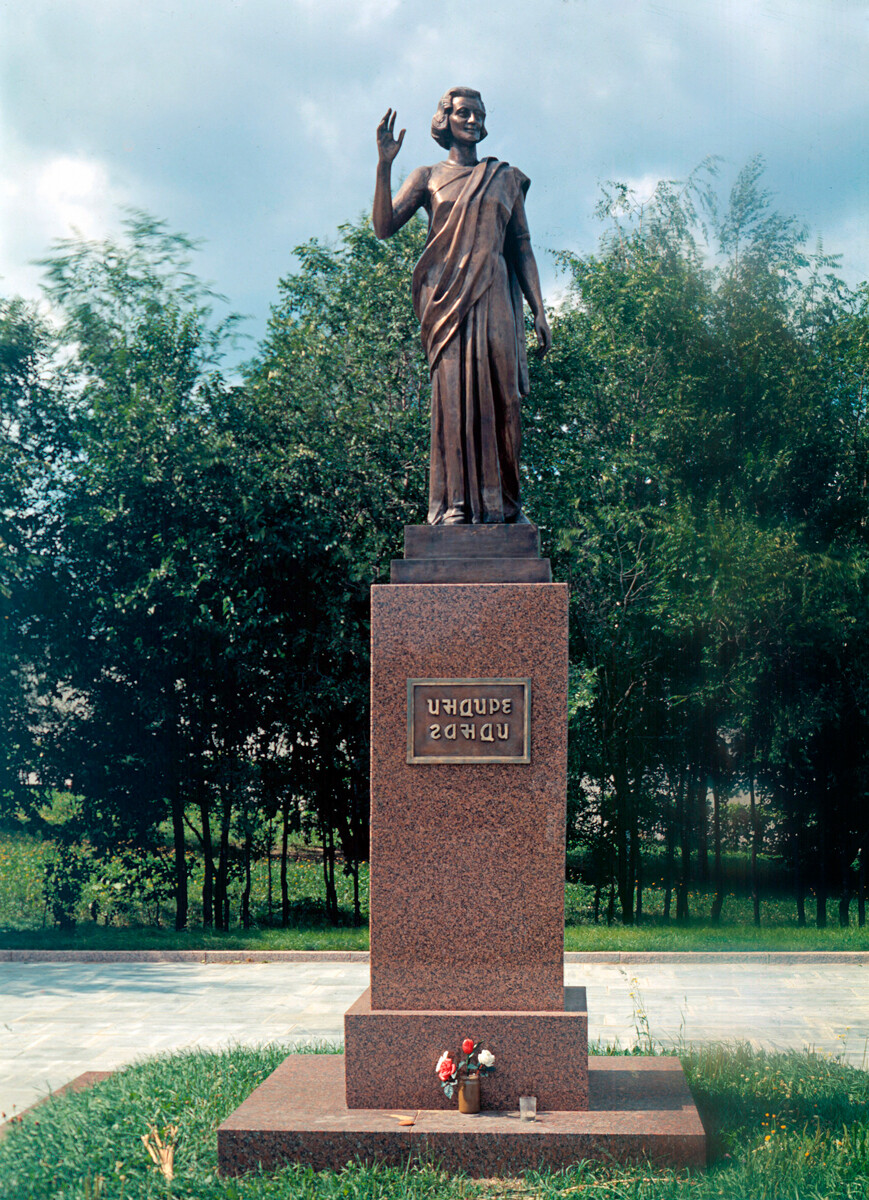
Indira Gandhi was a real celebrity in the USSR. Soviet citizens, especially women, were fascinated that she was the first (and to date, the only) female prime minister of India. Gandhi visited the USSR many times and met with Leonid Brezhnev (and also attended his funeral).
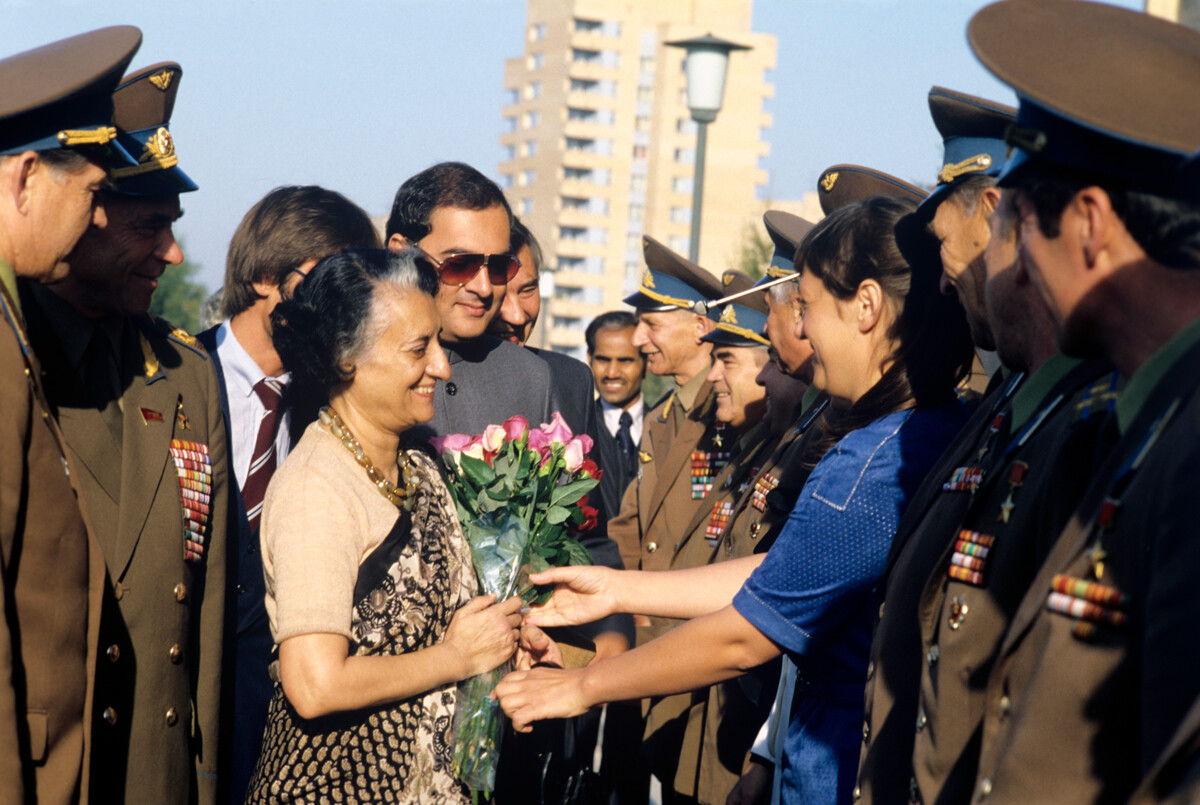
Indira Gandhi meeting Soviet cosmonauts in Zvezdny Gorodok, Moscow Region, 1982
Vladimir Akimov/SputnikHer murder in 1984 came as a real shock to the USSR. Posthumously she was awarded the prestigious Soviet Peace Prize. In 1985, a square near Moscow University was named in her honor, and two years later a monument by sculptor Oleg Komov was erected there.
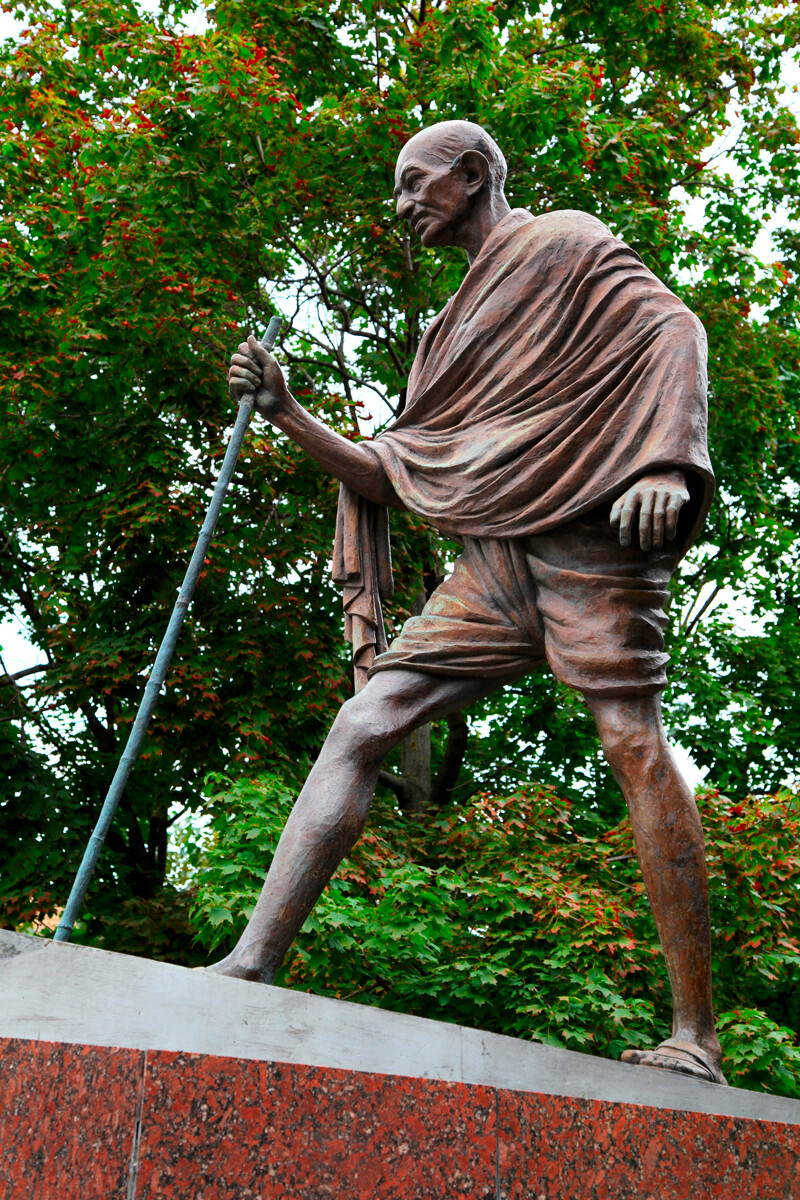
A monument to the famous philosopher and fighter for independence was unveiled in Moscow in 1988 at Indira Gandhi Square (which is why many Russians mistakenly think they are relatives). The monument was a gift from the government and people of India to Moscow. The statue is the work of the Indian sculptor Gautam Pal, and depicts Gandhi in what has become an iconic image - wearing traditional robes and walking forward with a pilgrim's staff in his hands.

Mahatma Gandhi in traditional Indian dress
Elliott & Fry / Public DomainIn Russia, Gandhi is widely known primarily for his philosophy of non-violence (satyagraha), which was inspired by Leo Tolstoy and his idea of “non-resistance to evil by violence”. It is known that the two thinkers and followers of nonviolence corresponded – in the 12 months before the Russian writer’s death in November 1910 – and held each other in high esteem.
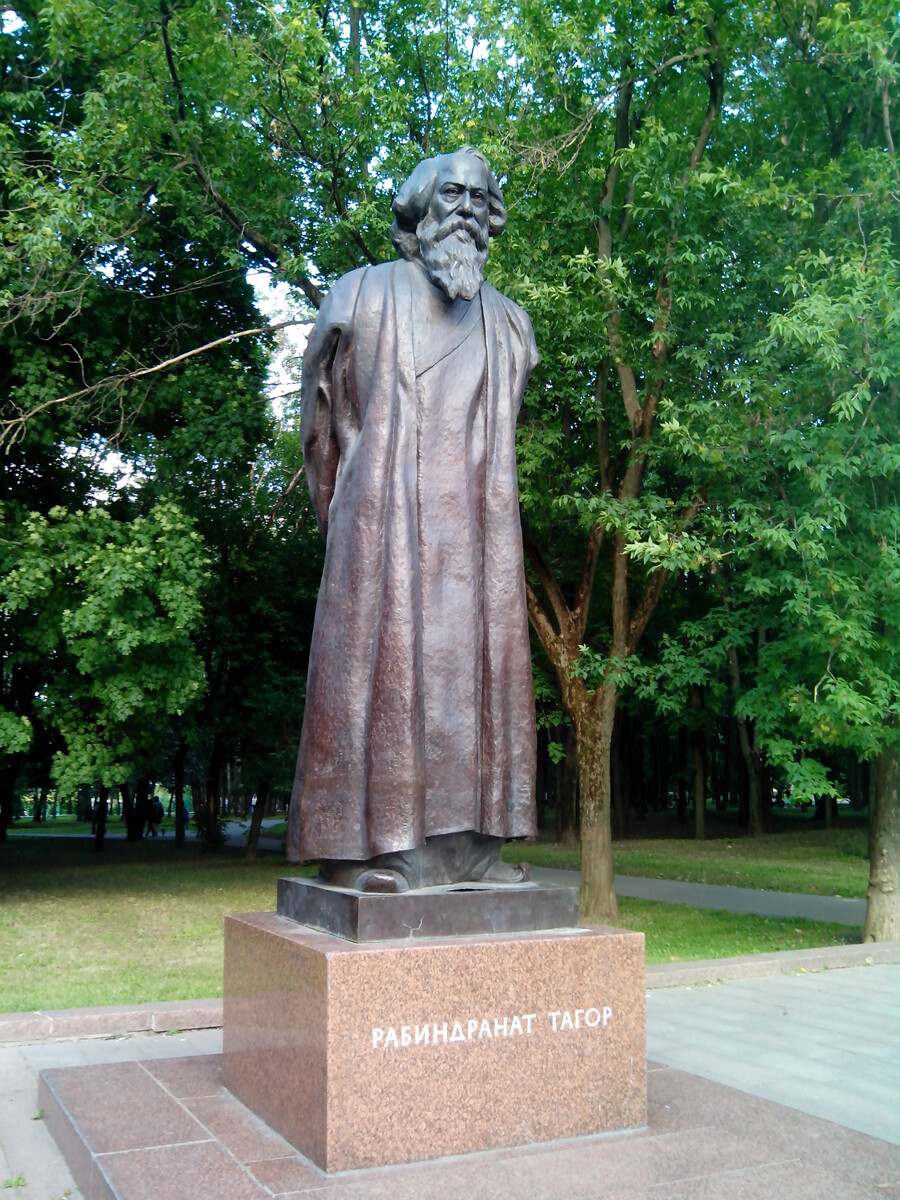
The same sculptor, Gautam Pal, also created a monument to another famous Indian, the poet and 1912 Nobel laureate in literature, Rabindranath Tagore. The monument was unveiled in 1991 in Druzhby (“Friendship”) Park in the north of Moscow.
The great poet came from the highest caste of the Brahmans, but was one of the first to criticize the caste system and to pay attention to the problems of the untouchables. He was an educator, establishing places of worship, schools, and universities. He even donated his Nobel Prize to education. In 1930, Tagore visited the USSR - he sympathized with the country and communism in general.
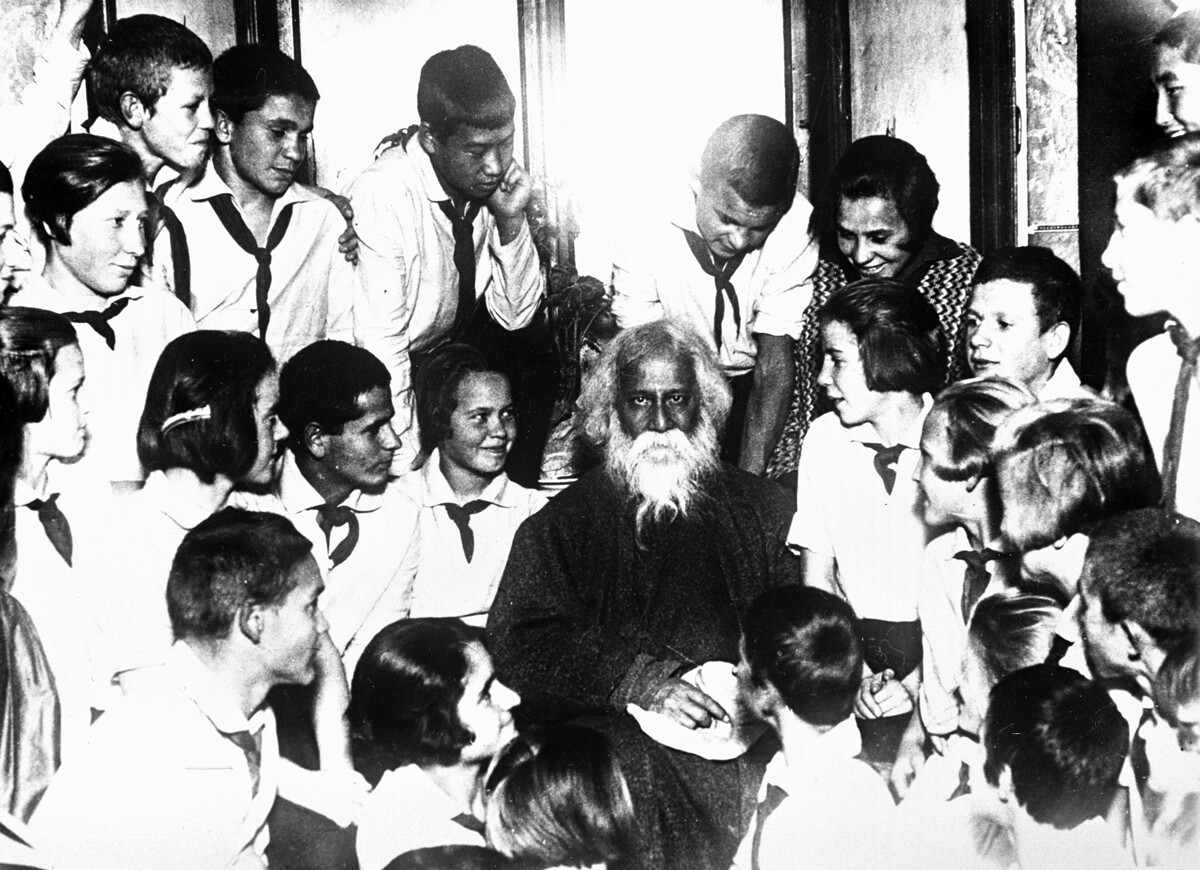
Tagore meeting Soviet pioneers, 1930
RGAKFD /SputnikBy the way, it was Tagore who first called Gandhi as “Mahatma”, although his real name was Mohandas. Mahatma, on the other hand, is a peculiar title which means “great soul”.
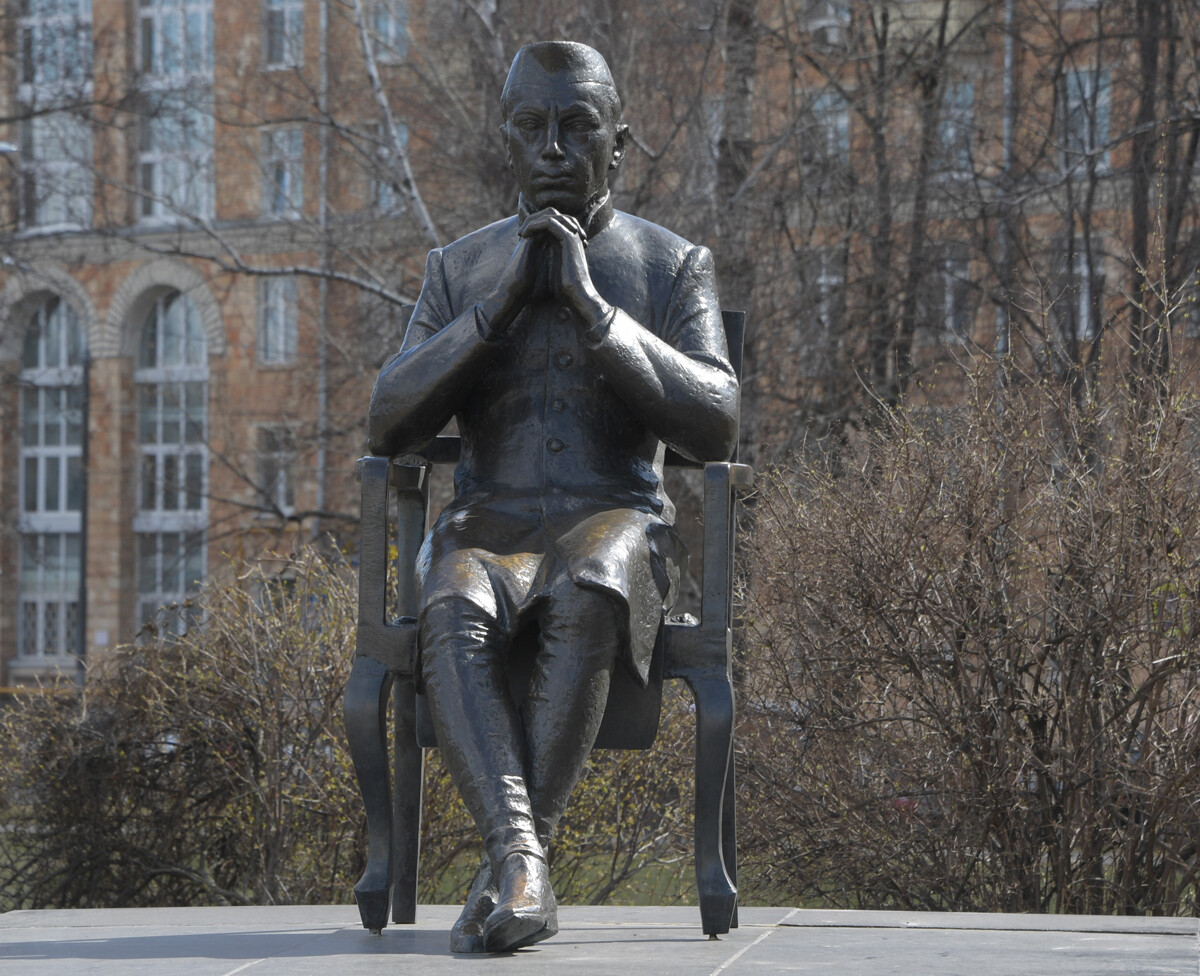
Not far from Moscow University stands a monument to India’s first prime minister and Indira Gandhi’s father. By the way, it is located on a square also named after him.
The opening ceremony in 1996 was attended by the current Prime Minister of India, H. D. Deve Gowda. The authors of the sculpture are father and son, Dmitri and Alexander Ryabichev, who previously made monuments to Mahatma Gandhi and Indira Gandhi as gifts to India.
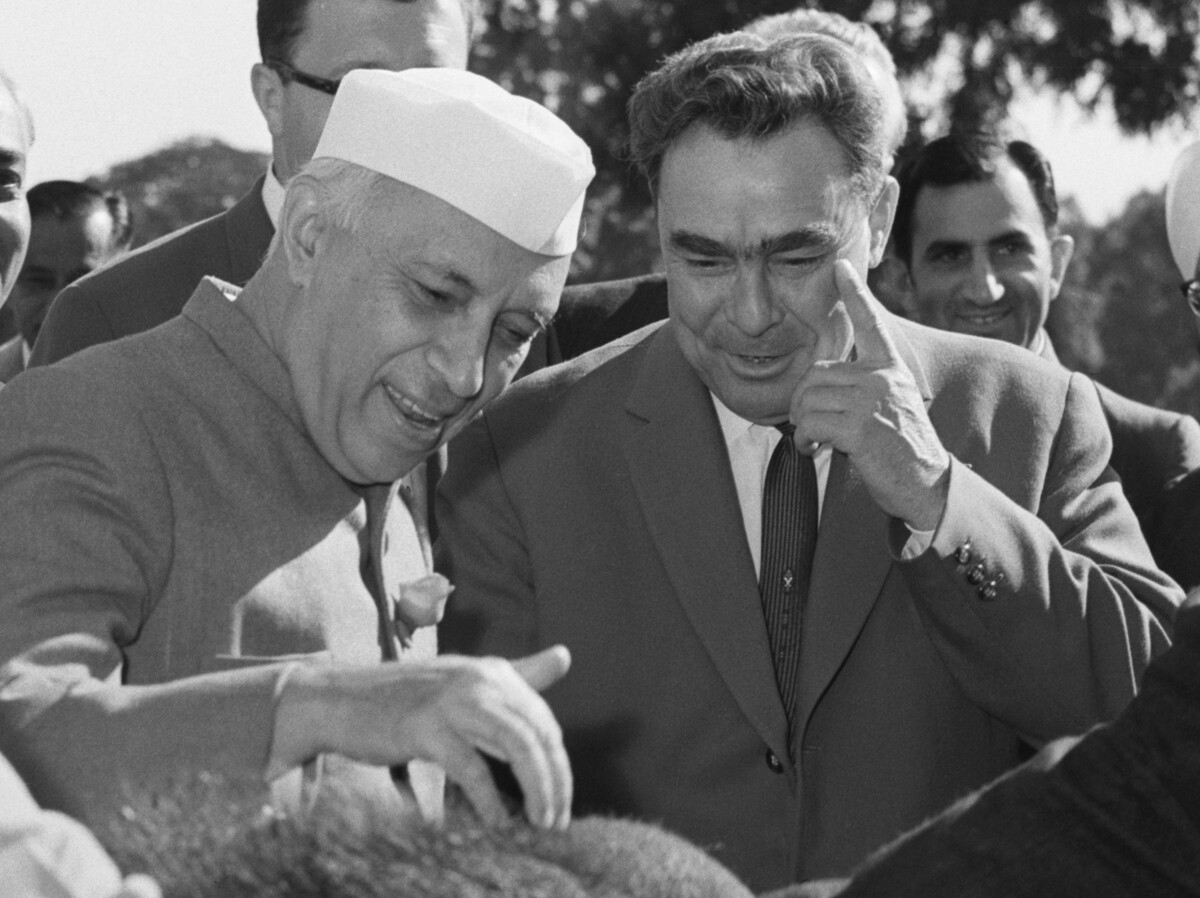
Nehru welcomes Leonid Brezhnev in India, 1961
Valentin Sobolev/TASSNehru wasn’t the USSR’s biggest friend, but he saw the Soviet Union as an important ally in India’s confrontation with China. He made a grand tour of the Soviet Union in 1955 and visited many cities, including Moscow, Volgograd, and the capitals of the Soviet republics of Georgia (Tbilisi) and Uzbekistan (Tashkent).
Dear readers,
Our website and social media accounts are under threat of being restricted or banned, due to the current circumstances. So, to keep up with our latest content, simply do the following:
If using any of Russia Beyond's content, partly or in full, always provide an active hyperlink to the original material.
Subscribe
to our newsletter!
Get the week's best stories straight to your inbox